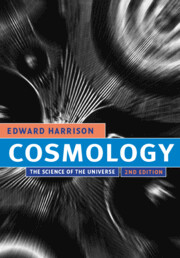Book contents
- Frontmatter
- Contents
- Preface
- Introduction
- PART I
- 1 What is cosmology?
- 2 Early scientific cosmology
- 3 Cartesian and Newtonian world systems
- 4 Cosmology after Newton and before Einstein
- 5 Stars
- 6 Galaxies
- 7 Location and the cosmic center
- 8 Containment and the cosmic edge
- 9 Space and time
- PART II
- PART III
- Appendix – Fundamental quantities
- Index
8 - Containment and the cosmic edge
from PART I
Published online by Cambridge University Press: 05 June 2012
- Frontmatter
- Contents
- Preface
- Introduction
- PART I
- 1 What is cosmology?
- 2 Early scientific cosmology
- 3 Cartesian and Newtonian world systems
- 4 Cosmology after Newton and before Einstein
- 5 Stars
- 6 Galaxies
- 7 Location and the cosmic center
- 8 Containment and the cosmic edge
- 9 Space and time
- PART II
- PART III
- Appendix – Fundamental quantities
- Index
Summary
To see a World in a grain of sand,
And a Heaven in a wild flower,
Hold Infinity in the palm of your hand,
And Eternity in an hour.
William Blake (1757–1827), Auguries of InnocenceTHE CONTAINMENT PRINCIPLE
Much of cosmology in the past has been concerned with the center and edge of the universe (see Figure 8.1), and our attitude nowadays on these matters is expressed by the principles of location and containment. Broadly speaking, the location principle (previous chapter) involves issues concerning the cosmic center, and the containment principle (this chapter) involves issues concerning the cosmic edge. Both principles help us to avoid pitfalls that trapped earlier cosmologists.
The containment principle of the physical universe states: the physical universe contains everything that is physical and nothing else. It is the battle cry of the physical sciences (chemistry and physics). To some persons the principle seems so elementary and obvious that it hardly deserves mentioning, to others it is a declaration of an outrageous philosophy. Before condemning the principle as too elementary or too outrageous, we must look more fully at what it means.
Modern scientific cosmology explores a physical universe that includes all that is physical and excludes all that is nonphysical. The definition of physical is sweeping and at first sight exceeds what common sense deems proper. It includes all things that are measurable and are related by concepts that are vulnerable to disproof. Atoms and galaxies, cells and stars, organisms and planets are physical things that belong to the physical world.
- Type
- Chapter
- Information
- CosmologyThe Science of the Universe, pp. 147 - 168Publisher: Cambridge University PressPrint publication year: 2000

